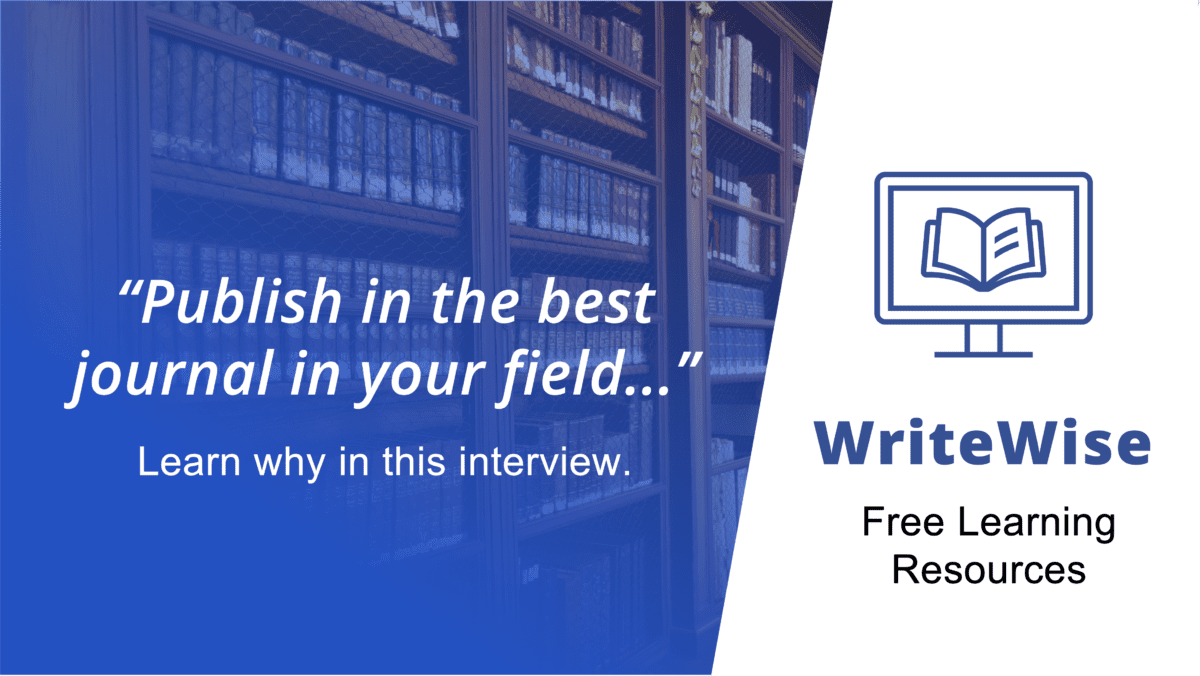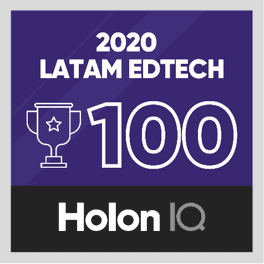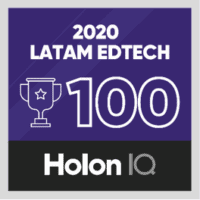Interview with Professor Patrice Codogno
Category: Interviews,Other Researchers -
Tags: All Researchers,University Directors

Table of Content
- Introduction
- Professor Codogno’s Tips for Students in a Nutshell:
- Scientific writing advices
- Professor Codogno’s creative process
- Exemplary writing style paper
- Publishing in top-tier journals
- Beyond metrics and impact factor
- Mastering Bibliography for project
- Top Udemy ChatGPT Course – Take Your Academic Writing to a New Level!
- AI Writer for Academic Writing in Markdown Format
- Top 10 Best Productivity Hacks That Work
- WriteWise: National and International Recognition
- Recognition by HolonIQ: Top 200 Women in Edtech + LATAM EdTech 100
- 5 Easy Steps to Master the Format of the Bibliography for Project
- Among vs. Amongst
- The Art of Implication meaning
- Do you want to learn how to use ChatGPT for Academic Writing?
Reading Time 11.5 minutes
Introduction
WriteWise had the honor and pleasure of interviewing Professor Patrice Codogno, Principal Investigator at the Institut Necker Enfants-Malades (INEM) in France. His research interests are mainly focused on autophagy regulation in response to nutritional stress and cancer.
Dr. Codogno has published 245 articles in top-tier journals such as Nature, PNAS, Nature Reviews Molecular Cell Biology, Nature Cell Biology, Nature Reviews Drug Discovery, Autophagy, EMBO Journal, Cell Metabolism, JBC, and Molecular Cell, among others.
Besides this, Dr. Codogno has been a reviewer for top-tier journals such as Science, Science Translational Medicine, Cell, Molecular Cell, Nature, Nature Cell Biology, and Nature Medicine, among many others.
Professor Codogno’s Tips for Students in a Nutshell:
- Everyone needs to find the style that works best for them when writing a manuscript. For new students, try starting with the results, materials and methods, introduction, discussion, and abstract. However, Professor Codogno personally prefers to write out a very rough draft first, starting from the abstract and going until the discussion.
- Make sure your abstract is very easy to read, mostly if you aim to publish in a top-tier multidisciplinary journal such Nature and PNAS.
- During the Peer Review Process, first and foremost, be polite with journal editors and reviewers.
- Professor Codogno recommends that students aim to publish their research in the best journal of their field rather than worry about impact factor.
- Aiming to publish in journals such as Nature and Science you need good science and besides, they want a topic that is sexy and popular that touches a wide readership.
Scientific writing advices
[WriteWise]
You have published over 200 papers in your career. How do you transmit this experience to your students? Through formal training, such as a course during their PhD program? Or do you teach them through personal comments and correcting their papers?
[Professor Codogno]
I don’t know all the French universities, but in some you could have training on how to write a scientific paper. That could be one aspect. As a lab researcher, I have almost no [classroom or formal] teaching duties. Instead, with PhD students, I try to give them some clues on how to write a paper. Well, the first thing is to start with the figures, put the figures in the order that you think is the best. [For the manuscript], first start by writing the results section because, I would say, it’s the most easy. Of course, materials and methods is not the most complex, and after this comes the introduction. The introduction is the background, which is not the most complex thing to write; however, you have to [keep] your main message [in mind].
For the abstract, and this is very important when you go to very high rating journals such as Nature or Cell, when you read the abstract, it needs to be very easy. It’s not very complex. I was in a meeting last week, and there was the editor of Science and the editor of Cell, and they said, ‘In the abstract, try to be the most understandable by everyone, to be broad.’ I discuss this with the students.
In the title, never overstate your data. Your title must be very close to the data you will present. Don’t overstate or try to be like a newspaper [headline]. And after this comes the most complex part of the paper, even for the most senior scientists, the discussion….Then, [my students and I] discuss the [whole] paper.
It’s good for PhD students to go through the whole process. And what I try to do, which is not easy, is to keep the style and the idea of the PhD, except if it is totally wrong, but it is the paper of the PhD student. It’s good to encourage that they determine the layout of the paper, even if I do not agree. Sometimes in science, you can have a different logic on certain aspects, but it is not because I’m the boss, [any changes should be due to] logical aspects. It should be the student’s paper, for the PhD student to gain experience. I think this is good, rather than the boss just writing the paper.
[WriteWise]
Well, that is very admirable of you because many researchers tend to have their own style and want to pass that style to their students. So, basically you get rid of the student’s style.
[Professor Codogno]
Well, maybe I do that now because I’m quite old! But in my group, we have time to train. We are not in a hurry to publish, except sometimes with some topics.
[WriteWise]
So the students have the time to practice their own styles.
[Professor Codogno]
Yes, definitely.

Professor Codogno’s creative process
[WriteWise]
Well, this is a little more personal. Do you enjoy the writing experience? Do you have particular habits or strategies that you use when you are writing that you would like to share with students?
[Professor Codogno]
I like to write. Now I write more reviews because younger people have to take the position [to write manuscripts]. When I write an article, what I try to do, even if it is not very good and not worrying about the English, is I start from the abstract and I stop at the end of the discussion. Meaning, in my first draft I write from top to bottom. And after this, I go back, and I read the abstract and the introduction and so on. But I like to write abstract, introduction, results, and discussion….all the sections in one or two days. It’s really a draft, but to put all of the idea down. And afterwards I go back and work on sentences and so on.
[WriteWise]
I’m curious, you start from the abstract and go straight through, but you recommend students to start with the results and materials and methods. Do you think one method is better than another?
[Professor Codogno]
No. Well, the first thing is always the layout of the figures. Once I have the layout of the figures, I start working on the abstract and so on. I like to do it this way, and this is a personal process. But this is for the very first draft…For the second draft, first I focus on the results because it is the least complex section to write. Then I work on the introduction, and afterwards I go to the discussion. With all manuscripts, I finish with the abstract. I try to be very clear in the abstract and give the conclusion of the paper, the background and the conclusion of the paper.
[WriteWise]
Different styles. For example, some researchers start with the results and go to the discussion, because you can interpret the data and compare it, then they write the introduction and finish with the abstract and the title. There are different styles. That’s great. Students should know there are different ways to write, and everyone has to find the way best for them.
Exemplary writing style paper
[WriteWise]
Is there any paper that you have published that you would consider exemplary in terms of writing style? Not in terms of scientific quality but in terms of scientific writing.
[Professor Codogno]
[Distinct classes of phosphatidylinositol 3′-kinases are involved in signaling pathways that control macroautophagy in HT-29 cells, Petiot A, et al., 275[2]: 992-8, 14 January 2000]
This paper is published in JBC, but is very highly cited because it came at the right moment at the right place regarding equations of macroautophagy. Of course I realized this at the moment, but 15 years on, I realize why this paper [is so cited]. Yes, I am satisfied with this paper.
This paper was very surprising…I remember when I received the feedback from the journal, I thought it was rejected because there were no comments. I just read from the editor, and there was one sentence in the letter that the paper was accepted with no modifications. Well, this was the first time and the last time that [a paper of mine] was accepted with no modifications!
Effective communication with editors
[WriteWise]
Speaking of editors, what type of advice would you give to students to communicate with the journal editors?
[Professor Codogno]
Ah, yes. First of all, to be very polite with the editor, well, and with the reviewers. If you do not agree, try to say you don’t agree, but in a very polite manner. It is not necessary to get in a fight, well, there are some exceptions of course. But be polite. Be polite, and really state in a very logical manner your argument. Do not say ‘it’s not fair,’ respond in a very logical manner. Even if you think the referee is wrong, there are many ways to say to someone ‘you are wrong.’ It’s useless to say ‘you’re a stupid guy’ or ‘you’re a stupid woman and you are wrong.’ No, be polite, and in a logical manner, you answer the referee and demonstrate why he or she is wrong.
The editor finally makes the decision, and the roles of editors are more and more important for high rating journals. In fact, now the most difficult thing is to [get your manuscript initially accepted by] editors. They reject about 80-90% [of manuscripts] from high-end journals, but once you go beyond [the editors] you have a good chance to be published. Meaning, the editor wants to help you to go on. But my first recommendation is to be polite, respond in a correct manner.
Publishing in top-tier journals
[WriteWise]
You have published many papers in top-tier, multidisciplinary journals such as PNAS and Nature. We have talked a little bit about how PhD students want to publish in these journals. So, do you have any general advice for students that aim to publish in these types of journals?
[Professor Codogno]
It depends. When you want to publish a paper, the choice of the journal is very important. If you work in, for example, a cardiovascular disease, you have to decide whether or not your message could be interesting to a large audience…That’s very tough. But if you publish in cardiovascular disease and you publish in Circulation, which is the best journal in the discipline, then that is good. If you apply for a post-doc or something, it is important to try and publish in the most important journal in your discipline. For example, Circulation. Of course, the best thing is to have published in your discipline and in multidisciplinary journals if you can…
These multidisciplinary journals, you know Nature and Science, sometimes you have a topic that is sexy…and [due to their wide readership] they want [to publish] a popular topic…For these journals they want science that is good and that is sexy…So for me, the thing is to publish in the best journal in your field.
Beyond metrics and impact factor
[WriteWise]
Here in Chile, there is a lot of pressure on researchers to publish more to increase the metrics of the universities and the country. However, as you know, good and cutting-edge science takes time to develop. So, do you consider this push towards more quantity here in Chile is jeopardizing the quality of science, and that this may contribute as to why the impact of the science here is less than other countries?
[Professor Codogno]
Well, in France, we are now working in Institutes…This is a policy to create research, and these institutes are dedicated to one aspect, such as cardiovascular disease…The thing is to put together good scientists. It is very good for exchange between scientists, for PhD training, for post-doc exchange. I know in my Institute in Paris, there is a lot of discussion and exchange of new information between young scientists, PhD and post-docs…changing techniques and so on. Coming back to your point, I think it’s important to gather together many laboratories to form Institutes, to give money to these Institutes, and there will be a sort of stimulation that will be very good for science. Is it wiser to give a smaller amount of money to one part of the city and another part of the city, or bring [the labs together with a larger amount of money]?

[WriteWise]
What are your thoughts on the metrics being asked of investigators today in terms of publications?
[Professor Codogno]
I am very interested, like many scientists, with the experience of eLife, the new journal by Randy Schekman, for example…[but metrics] are difficult to escape because this journal now has an impact factor. So, people publishing in eLife will [now] go to the impact factor at the end of the day, so it’s very difficult.
I would say in principal, I totally agree with Randy Schekman, I totally agree with that. But it’s very difficult to go against the impact factor. In fact, in many committees, there are members who still look at the impact factor. But I totally agree with trying to go beyond the metrics.
It’s not my field, but I know by experience that Development is an excellent journal, but the impact factor is not very high. But the journal is very good. For people in the field of development, it is very tough to publish in this journal. So, it’s beyond impact factor…So, we have to take care with metrics.
Author: WriteWise Team
The WriteWise Team is a dedicated group of specialists in academic writing, with vast experience in teaching and the publication process. The goal of our team is to impart valuable knowledge on a range of topics that will help students, researchers, and universities achieve their goals.
Posted In: Interviews,Other Researchers
Tagged As: All Researchers,University Directors
Share Now!
Check out these other publications
Do you want to learn how to use ChatGPT for Academic Writing?
Show your love!
More Publications





















